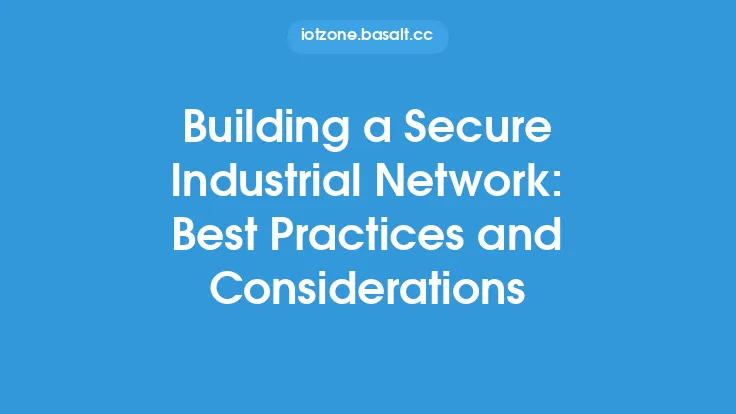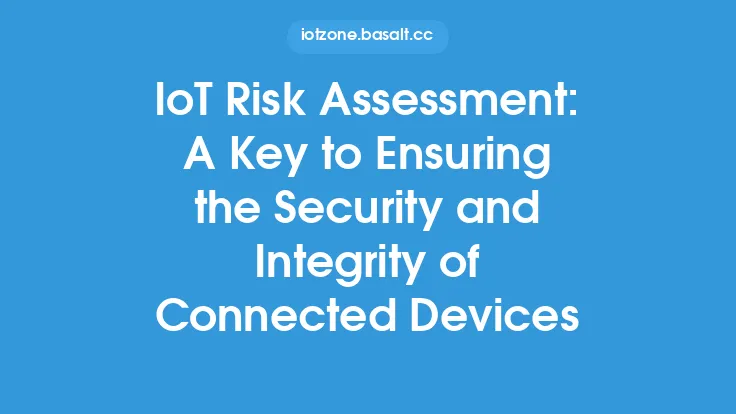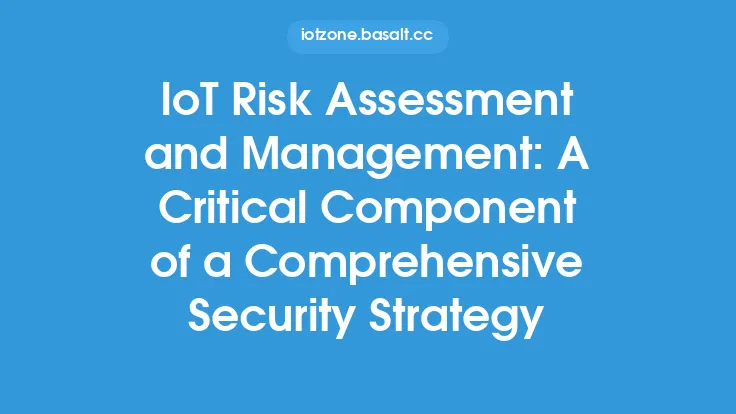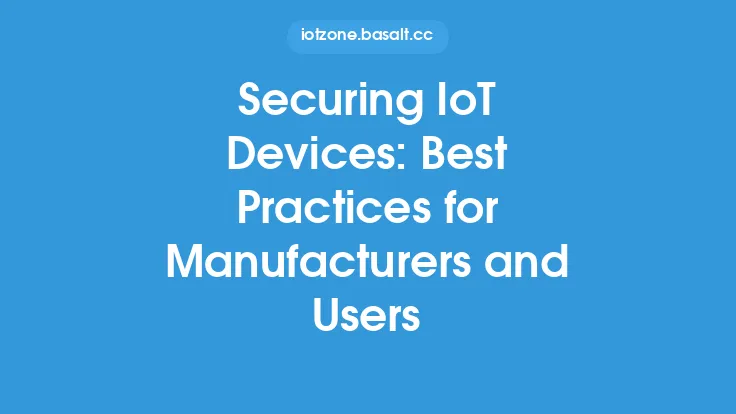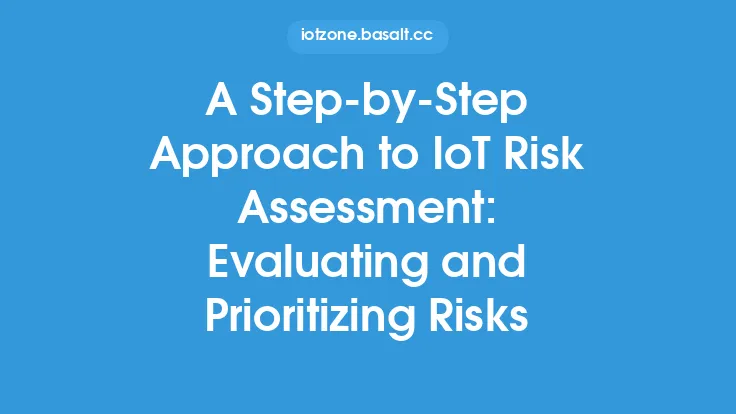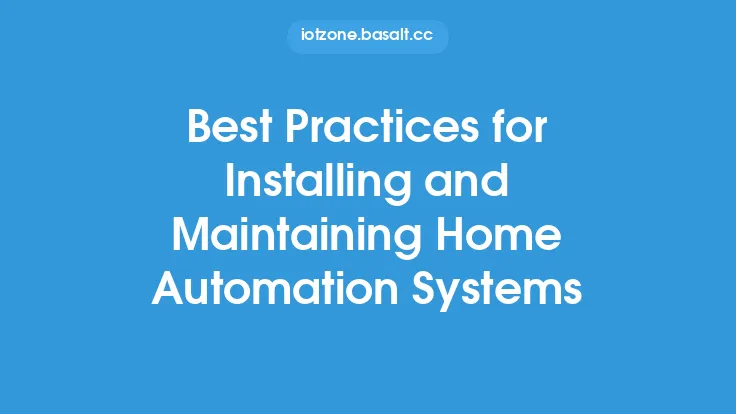Conducting a thorough risk assessment is a crucial step in ensuring the security and integrity of IoT systems. As the number of connected devices continues to grow, the potential attack surface expands, making it essential to identify and mitigate potential risks. In this article, we will delve into the best practices and considerations for conducting a risk assessment for IoT systems, providing a comprehensive overview of the process and its importance.
Introduction to Risk Assessment in IoT
Risk assessment is a systematic process used to identify, evaluate, and prioritize potential risks to an organization's assets, including IoT systems. The goal of a risk assessment is to provide a comprehensive understanding of the potential threats and vulnerabilities that could impact the confidentiality, integrity, and availability of IoT devices and data. By conducting a risk assessment, organizations can identify areas of high risk and implement controls to mitigate or manage those risks, reducing the likelihood of a security breach or other adverse event.
Identifying Potential Risks and Threats
The first step in conducting a risk assessment for IoT systems is to identify potential risks and threats. This involves analyzing the IoT system's architecture, including devices, networks, and data flows, to identify potential vulnerabilities and attack vectors. Some common risks and threats to IoT systems include:
- Unauthorized access to devices or data
- Malware or ransomware attacks
- Denial of Service (DoS) or Distributed Denial of Service (DDoS) attacks
- Data breaches or unauthorized data disclosure
- Physical damage or tampering with devices
- Supply chain risks, such as counterfeit or compromised components
Evaluating Risk Likelihood and Impact
Once potential risks and threats have been identified, the next step is to evaluate their likelihood and potential impact. This involves assessing the probability of a risk occurring and the potential consequences if it does. The likelihood of a risk can be evaluated based on factors such as:
- The presence of vulnerabilities or weaknesses in the IoT system
- The potential for human error or misuse
- The presence of threats, such as malware or unauthorized access attempts
- The effectiveness of existing controls or mitigations
The potential impact of a risk can be evaluated based on factors such as:
- The potential for financial loss or damage
- The potential for reputational damage or loss of customer trust
- The potential for harm to individuals or the environment
- The potential for disruption to business operations or services
Assessing IoT System Vulnerabilities
IoT systems are often complex and composed of multiple devices, networks, and data flows, making them vulnerable to a wide range of attacks. Some common vulnerabilities in IoT systems include:
- Weak passwords or authentication mechanisms
- Outdated or unpatched software or firmware
- Insecure communication protocols or data encryption
- Insufficient access controls or authorization mechanisms
- Physical vulnerabilities, such as exposed devices or cables
To assess these vulnerabilities, organizations can use a variety of techniques, including:
- Penetration testing or vulnerability scanning
- Code reviews or security audits
- Network traffic analysis or monitoring
- Physical security assessments or site surveys
Implementing Risk Mitigations and Controls
Once risks and vulnerabilities have been identified and evaluated, the next step is to implement risk mitigations and controls. This can include a range of measures, such as:
- Implementing secure communication protocols or data encryption
- Enforcing strong passwords or authentication mechanisms
- Regularly updating or patching software or firmware
- Implementing access controls or authorization mechanisms
- Conducting regular security audits or vulnerability assessments
- Providing training or awareness programs for users or operators
The goal of these controls is to reduce the likelihood or impact of potential risks, and to ensure the confidentiality, integrity, and availability of IoT devices and data.
Monitoring and Reviewing IoT System Security
Finally, it is essential to continuously monitor and review the security of IoT systems, to ensure that risks are being effectively managed and mitigated. This can include:
- Regularly reviewing security logs or incident reports
- Conducting periodic security audits or vulnerability assessments
- Monitoring network traffic or system performance
- Providing ongoing training or awareness programs for users or operators
- Reviewing and updating risk assessments and mitigation plans as needed
By continuously monitoring and reviewing IoT system security, organizations can ensure that their risk assessments and mitigation plans remain effective and up-to-date, and that their IoT systems remain secure and resilient.
Best Practices for IoT Risk Assessment
To ensure the effectiveness of an IoT risk assessment, organizations should follow best practices, such as:
- Using a systematic and structured approach to risk assessment
- Involving multiple stakeholders and subject matter experts
- Using a risk-based approach to prioritize and mitigate risks
- Continuously monitoring and reviewing IoT system security
- Providing ongoing training and awareness programs for users or operators
- Reviewing and updating risk assessments and mitigation plans as needed
By following these best practices, organizations can ensure that their IoT risk assessments are comprehensive, effective, and aligned with industry standards and best practices.
Conclusion
Conducting a risk assessment for IoT systems is a critical step in ensuring the security and integrity of connected devices and data. By identifying potential risks and threats, evaluating risk likelihood and impact, assessing IoT system vulnerabilities, implementing risk mitigations and controls, and continuously monitoring and reviewing IoT system security, organizations can reduce the likelihood of a security breach or other adverse event. By following best practices and using a systematic and structured approach to risk assessment, organizations can ensure that their IoT risk assessments are comprehensive, effective, and aligned with industry standards and best practices.
